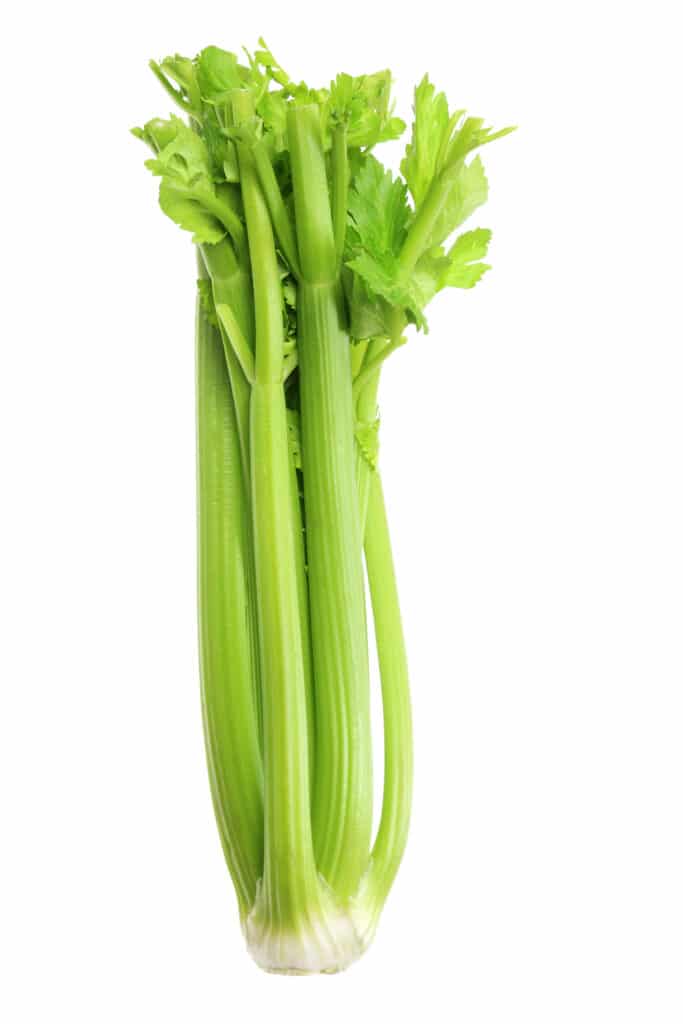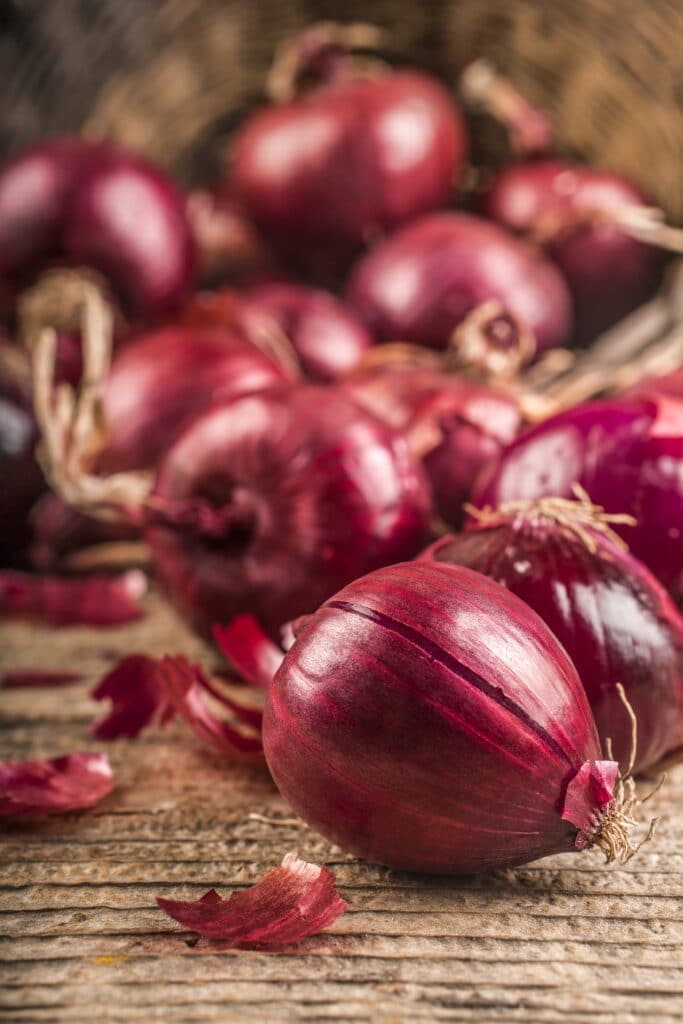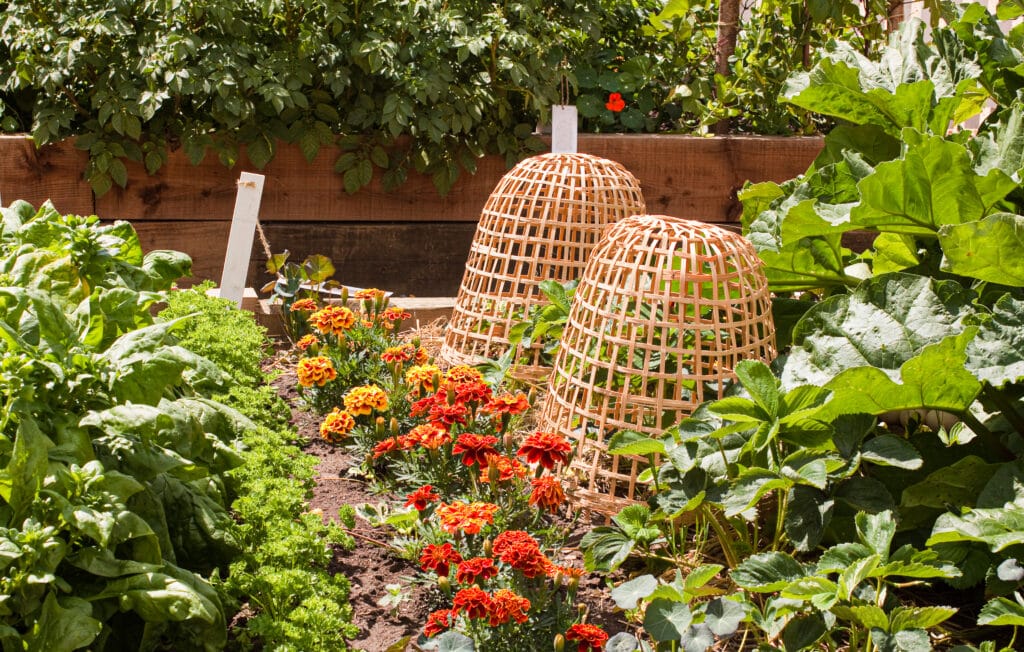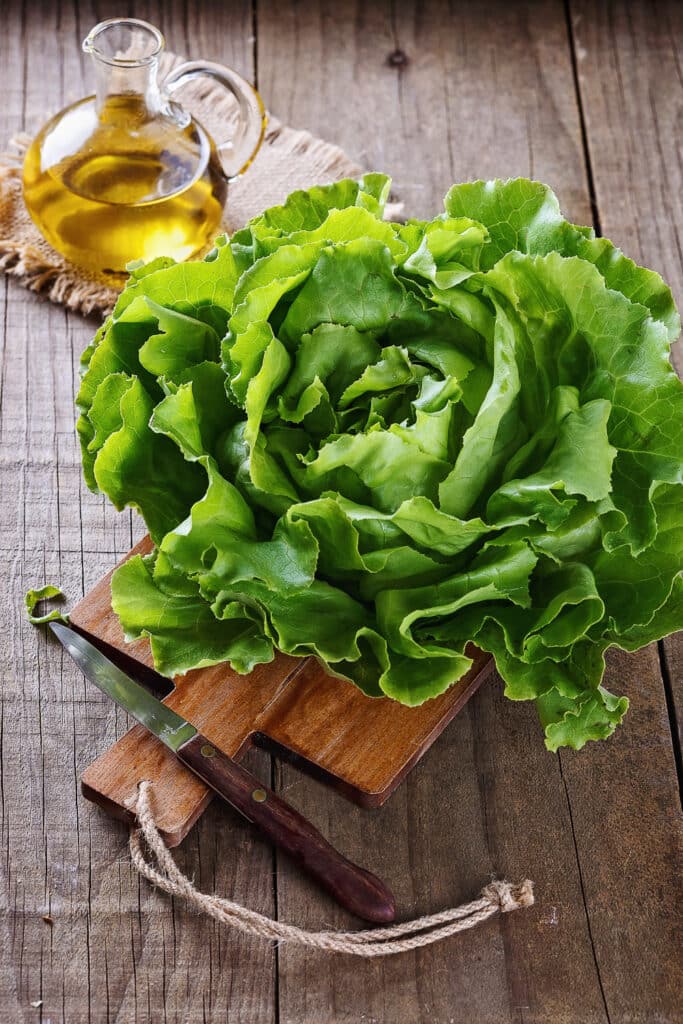The Best Leek Companion Plants for More Successful Harvests
Leeks are an excellent addition to your garden. They are visually stunning, growing upright and perfect, adding texture and height to the garden. As a vegetable, they taste amazing, especially fresh from the garden. Growing them isn’t tricky either; they are generally fuss-free! But picking a few leek companion plants can help prevent pests and even make your leeks tastier.

The Benefits of Companion Planting
Companion planting brings a whole host of benefits to the organic home garden. All plants have beneficial partners who can help improve growth, taste, and yield and deal with pests and disease problems. Benefits of companion planting:
Attract pollinators: Plants with bright flower colors and lots of pollen and nectar attract pollinators like bees. We all want extra pollinators in our gardens to increase our yields!
Attract beneficial predatory insects: Many plants will attract helpful bugs like parasitic wasps and ladybugs to the garden to help eradicate insect pests.
Repel harmful insects: Some plants have intense scents that control common garden pests, like squash bugs and tomato worms. Or they attract harmful pests and work as a trap crop to keep these pests away from your precious crops/
Help improve the soil: Some flowers, like marigolds, help destroy root-knot nematodes that live in the ground and destroy roots from below. While other plants like leafy greens can act as living mulch to help control moisture. In other instances, plants with large taproots, like parsnips, can help break up heavy soils.
Help control weeds: Densely underplanting with vegetables like spinach or leafy trailing flowers like nasturtiums will help manage weeds.
Companion planting can help with disease issues. Diseases are spread more quickly through your garden when plants of the same type are grouped. Adding different species throughout the planting can help break up the garden and slow the spread of diseases like powdery mildew or blight.
Learn more about companion planting with our article on Companion Planting Vegetables for Higher Yields and Healthier Gardens.

Planting Tips For Leeks
Leeks are not hard to grow but need a long growing season. This means starting three months before the last frost date for zones with short seasons. You can also pick up starts at garden centers in the spring. I am always surprised more people don’t grow leeks in vegetable gardens!
Leeks are incredibly cold-hardy. If I can chip through the snow and ice to get at my leeks, I can harvest them in the middle of winter!
Seed Starting: Sow indoors in early spring and move to a protected cold frame if you have one.
Sun Requirements: Will do best in full sun but tolerate partial shade.
Soil requirements: Requires rich, loamy, fertile soil that holds moisture well.
Fertilizer: In late summer, drench plants thoroughly with water-soluble plant food.
Spacing: Space plants 8 inches in all directions.
Blanching: When leeks are almost the size you want, blanch them for 2-3 weeks by mounding soil, mulch, or cardboard tubing around the base of each stem.
What are the best companion plants for leeks?
Some leek companion plants benefit leeks by repelling pests or creating a living mulch to help with water retention and weed growth. Others benefit from leeks’ ability to repel carrot root flies, aphids, and leaf miners. These are the plants that make good companions for leeks:
| Companion | Benefits | Companion | Benefits |
| Carrots | Repels Pests | Brassicas | Leeks Repel Pests |
| Parsnips | Repels Pests | Onions | Similar Growing Conditions |
| Peppers | Leeks Repel Pests | Rosemary | Repels pests, enhances flavor |
| Tomatoes | Leeks Repel Pests | Thyme | Repels pests, enhances flavor |
| Celery | Leeks Repel Pests | Chamomile | Anti-fungal, enhances flavor |
| Strawberries | Leeks Repel Pests | Nasturtium | Repels pests, attracts beneficial insects |
| Beets | Leeks Repel Pests | Marigolds | Repels pests, attracts beneficial insects |

Vegetable and Fruit Leek Companion Plants
There are so many beautiful vegetables and fruit you can plant side by side with your leeks, from root crops like carrots, beets, and parsnips to nightshades and brassicas and a few in between:
Carrots
I always interplant my carrots with my leeks. Every year, my favorite-looking bed is the leeks and carrots; they always look perfect together.
Carrots make the best companion plants for leeks, hands down. Both plants have fly pests that cause damage and spread disease. Carrots will help repel onion flies and leek moths, and leeks will help repel carrot rust flies.
I have never had a problem with carrot rust flies in all my years of gardening, but I have had issues with onion fly maggots but never in my leek and carrot bed.
Carrots are also said to help improve the flavor of leeks.
Learn More:
Parsnips
Parsnips are one of the best leek companion plants you can grow. Both crops have long growing seasons and thrive in similar soil conditions, making them an easy and efficient pairing in the garden. One of the biggest benefits of planting leeks and parsnips together is natural pest control—leeks help deter common parsnip pests, like carrot flies, with their strong scent. At the same time, parsnips have deep roots that break up compacted soil, improving drainage and creating better growing-conditions for leeks.
Since leeks have shallow roots and parsnips grow deeper, they won’t compete for nutrients, allowing both plants to flourish side by side. Their different growth habits also help maximize space in the garden, making them a great choice for smaller plots. If you’re looking for a low-maintenance, productive combination, companion planting leeks with parsnips is a smart and space-saving strategy.
Chili peppers, sweet peppers, and tomato plants
Peppers and tomatoes are excellent choices for leek companions, as they thrive in similar growing conditions and offer mutual benefits. Leeks naturally repel pests like aphids and spider mites, which commonly target peppers and tomatoes, helping to keep these plants healthier without the need for chemical sprays. In return, the broad leaves of peppers and tomatoes provide partial shade, helping to retain soil moisture—especially beneficial during hot summer months.
Another advantage of growing leeks alongside chili peppers, bell peppers, and tomatoes is efficient space use. Since leeks grow upright and don’t spread much, they fit well between pepper and tomato plants without competing for nutrients. Just be sure to space everything properly to allow for good airflow and prevent fungal issues.
Learn More:
Beets
Beets and leeks grow well together because they use garden space efficiently. Leeks grow tall with deep roots, while beets stay low with shallow roots, meaning they don’t compete for nutrients. Plus, leeks help deter common beet pests like aphids and leaf miners, making them a natural protector in the garden. Both crops enjoy rich, well-draining soil and consistent moisture, so their care needs align perfectly.
For the best results, give beets a little room to develop their roots while keeping leeks spaced for good airflow.
Learn More:
Strawberries
Strawberries and leeks are a great duo for your garden! Planting leeks alongside your strawberry plants can help keep unwanted pests away because leeks naturally deter them. Plus, strawberries grow low to the ground, which helps keep the soil moist and prevents weeds from taking over—benefiting both types of plants. This partnership helps them grow better together and makes the most out of your garden space.
Learn More:
Apple Trees
If you have fruit trees in your garden or plan to add fruit trees, you should consider building a guild. For those unfamiliar, a fruit tree guild is a permaculture method of planting a tree in combination with other plants. The tree and plants will collectively grow together to create a mini-ecosystem around the tree.
For apple trees, leeks are one of the best plants to add to a guild. Plant the leeks around the tree’s base to help prevent apple scab and other fungi that can impact apple trees. Leeks will also help prevent and repel pests.

Celery
Celery and leeks grow well together, benefiting from similar soil and moisture needs. Leeks help deter pests that commonly bother celery, like aphids and carrot rust flies, making them a natural defense in the garden. Plus, celery’s shallow roots won’t compete with leeks for nutrients, allowing both to grow strong and healthy. If you’ve ever struggled with keeping celery pest-free, leeks might be the perfect planting partner.
Since both crops love rich, consistently moist soil, they make a low-maintenance pairing. Just be sure to give them enough space—celery spreads out more than leeks and needs room to develop its crisp stalks.
Learn More:
Onions (Yes and No)
You can grow other allium plants like onions, green onions, garlic, and shallots alongside leeks. They require similar growing environments and can get along very well planted side by side.
But only plant onions and other alliums sparingly near your leeks. Although the plants can grow together just fine, having a monoculture (planted area of the same family) can cause environmental challenges. Members of the allium family share similar pests and diseases, and if one gets a foothold into your garden bed, it can spread rapidly and be a challenge to treat and stop.
Learn More:
Brassicas
Members of the cabbage family, like Brussels sprouts, cabbage, cauliflower, kale, and broccoli, make decent neighbors for leeks. The plants do not compete at the same root level for water or nutrients, and all generally enjoy the same growing environment.
The strong scent of the leeks can help deter aphids and cabbage worms.

Aromatic Herbs As Companions For Leeks
Interplanting herbs in the vegetable garden is always a good idea. Herbs entice pollinators like bees and butterflies to the garden. They also attract beneficial insects like lacewings, ladybugs, and parasitic wasps, which will help deal with harmful pests.
Rosemary & Thyme
Rosemary and thyme are said to help enhance the flavor of leeks. In addition, both herbs will encourage beneficial insects to the garden bed to help with insect pests.
Plus, rosemary and thyme look fabulous growing in the garden.
Learn More:
Chamomile
This flower has plenty of benefits for the garden and is an excellent neighbor to plant next to leeks. It attracts pollinators with its sweet scent and is anti-fungal and anti-bacterial, which will help protect your leeks. Chamomile is also said to help improve the taste of members of the allium family (leeks, onions, shallots, garlic).
Learn More: Chamomile is a wonderful addition to any flower garden and makes a fantastic companion plant, but have you ever considered creating a dedicated tea garden? We have a guide for you if a tea garden has always been something you want to grow!
Flowers as Companion Plants With Leeks
Who doesn’t love a little pop of flower color in the garden? Beyond the lovely addition of color, flowers make to a veggie patch, they also provide several incredible benefits:
Nasturtiums
Nasturtiums help repel insect pests like squash bugs and cucumber beetles. They also act as a trap crop for flea beetles and aphids.
The flowers will help attract beneficial insects like ladybugs and parasitic wasps, which will help deal with insect pests.
Provide ground cover. Plants like nasturtiums that spread across the ground serve as a living mulch that will help suppress weeds and keep moisture from evaporating in the mid-day sun.
Learn More:
Marigolds
Marigolds make excellent companions for leeks. The strongly scented flowers have many benefits!
Attract beneficial predatory insects: Marigolds attract helpful insects like parasitic wasps hoverflies, and ladybugs. Ladybugs, in particular, will feast on aphids infestations.
Repel harmful insects: Marigolds’ strong aroma works as pest control for common garden pests such as squash bugs and tomato hornworms. The flowers are also a favorite food of slugs, spider mites, and Japanese beetles, making them an excellent trap crop in the garden.
Help improve the soil: Turning the marigold flowers into the ground at the end of the season helps kill pests like root-knot nematodes. Or the plants provide a living mulch to help keep the soil cool and moist. Be sure to use French marigolds and Mexican marigolds if you intend to help fend off nematodes.
They help control weeds: Densely planting marigolds around veggies like beans or in open spaces around other veggies makes it difficult for weeds to take hold.
Companion planting can help with disease issues. Diseases are spread more quickly through your garden when plants of the same type are planted in a large grouping. Adding different species throughout the planting can help break up the garden and slow the spread of diseases.
Learn More:
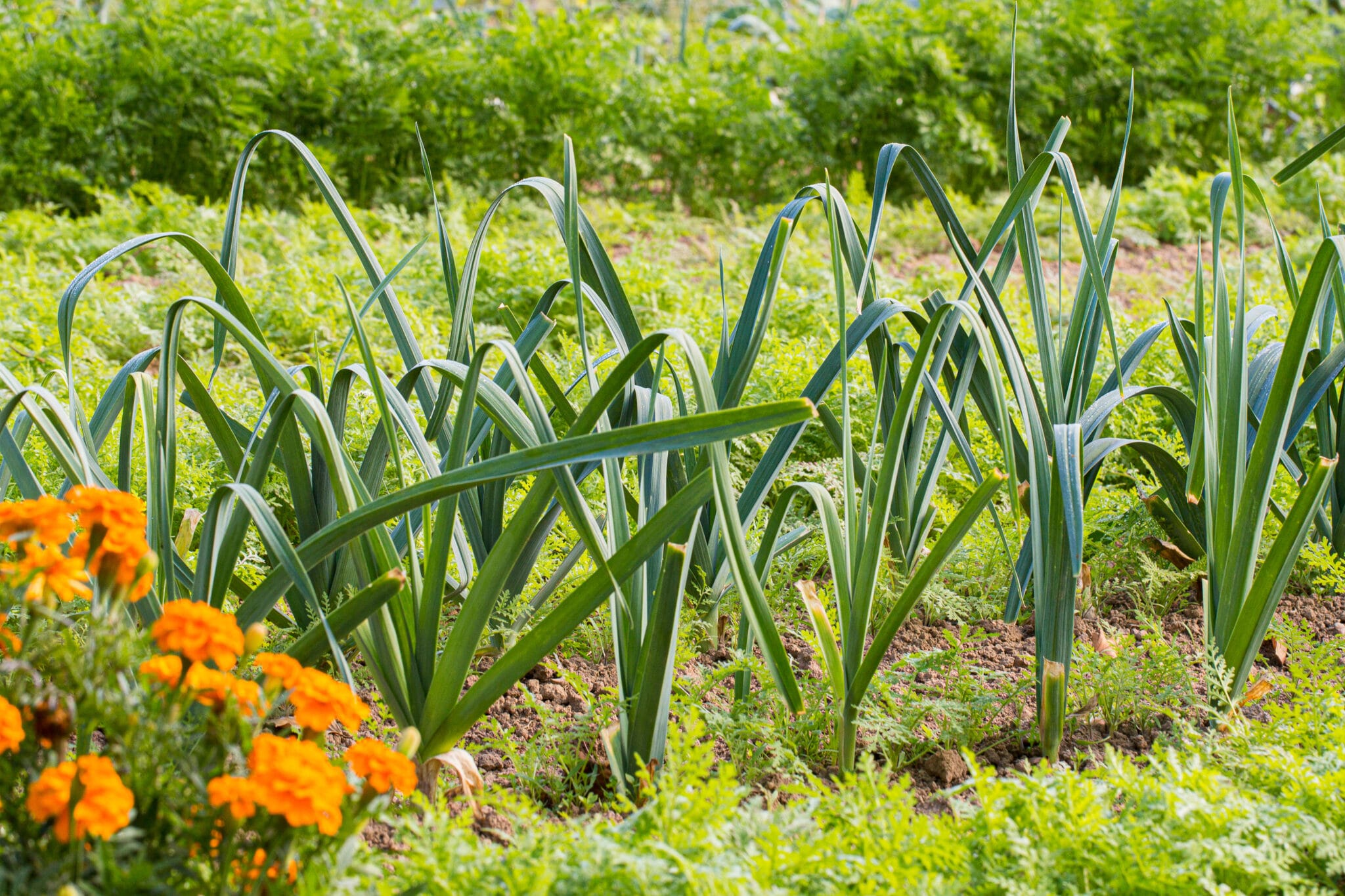
What Not To Plant With Leeks
It is important to pick the right companion plants for your garden. Not every plant will be beneficial; some will cause poor growth and encourage disease and pests. You will want to avoid these bad companions for leeks:
Beans, Bush Beans & Peas
Beans are considered allelopathic plants, which means they produce biochemicals that can hinder the growth of leeks. Therefore, growing beans, broad beans, pole beans, peas, or any member of the legume family next to leeks will cause stunted growth of beans and leeks.
Learn More:
Asparagus
Asparagus and leeks require much different growing environments. To accommodate one, you will need to disadvantage the other. It’s best to keep alliums out of your asparagus bed.
Learn More: Curious what you CAN plant with asparagus? Check out this list of asparagus companion plants!

Final Thoughts on Leek Companion Plants:
Companion planting with leeks is a simple way to create a healthier, more productive garden. The right plant pairings can help with pest control, improve soil conditions, and make the most of your growing space. Whether you’re planting leeks alongside carrots, strawberries, or herbs, these combinations can work together to support better growth.
Have a favorite leek companion plant? Share your experience in the comments, and if you found this guide helpful, pass it along to a fellow gardener!
FAQs
Avoid planting leeks near beans, peas, and asparagus. Legumes can stunt leek growth, and asparagus competes for similar nutrients, making them poor companions.
It’s best to keep leeks and onions separate. While they have similar needs, planting them together can attract onion flies and other pests that target allium crops. Rotating their placement each season helps reduce pest problems.
Spacing depends on the plant. For example, carrots and leeks can be interplanted closely (about 4-6 inches apart), while larger plants like cabbage should be at least 12-18 inches away to allow proper growth.
Yes! Leeks grow well in deep containers alongside smaller companions like lettuce, strawberries, or herbs. Just ensure there’s enough space for their roots to develop properly.
Want to Learn More About Companion Planting?
We have loads of information about companion planting in your home gardens:

Author: Laura Kennedy
Writer & Owner of Little Yellow Wheelbarrow
Laura is a highly skilled gardener and fervent flower enthusiast. Despite her playful battle with plant spacing guidelines, Laura’s work inspires gardeners to create thriving, beautiful spaces that reflect both creativity and sustainability.
Editor’s Note: This post was originally published on February 14, 2022. It was updated on November 10, 2024 to improve formatting and content.



















